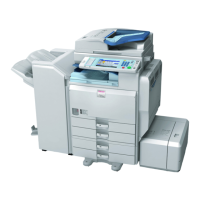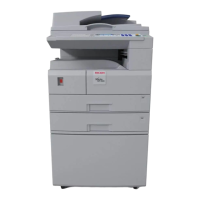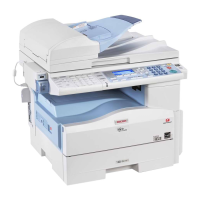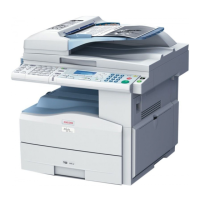• IPP port name must include the IP address when using the IPP protocol.
When connected with USB
• The machine must be connected to the computer's USB port using the USB interface cable (for
Windows Me / 2000 / XP / Vista, Windows Server 2003 / 2003 R2).
• The computer must support bidirectional communication.
• Install SmartDeviceMonitor for Client from the supplied CD ROM.
If Bidirectional Communication Is Disabled
Set up option settings when bidirectional communication is disabled.
• Under Windows 2000 / XP / Vista, and Windows Server 2003 / 2003 R2, Manage Printers
permission is required to change the printer properties in the [Printers] folder. Log on as an
Administrators or Power Users group member.
• Under Windows NT 4.0, Full Control permission is required to change the printer properties in the
[Printers] (Windows 2000 / Vista) or [Printers and Faxes] (Windows XP / Windows Server 2003)
folder. Log on as an Administrators or Power Users group member.
1. On the [Start] menu, click [Printers and Faxes].
The [Printers and Faxes] window appears.
When using Windows 2000, point to [Settings] on the [Start] menu, and then click [Printers]. The
[Printers] window appears.
When using Windows Vista, click [Control Panel] on the [start] menu, and then click [Printer]. The
[Printers] window appears.
2. Click the icon of the printer you want to use.
3. On the [File] menu, click [Properties].
When using Windows Vista, right
click the icon of the printer you want to use, and then click the
[Properties].
4. Click the [Change Accessories] tab.
If options in the [Change Accessories] tab are disabled, bidirectional connection is enabled. In this
case, no change is necessary for option settings.
If you are using the RPCS printer driver, click the [Change Accessories] tab.
5. Select options installed from the [Select printer options:] area, and then make the necessary
settings.
6. Select the total amount of the memory in [Total memory:] when the optional SDRAM module
is added.
Making Option Settings for the Printer
53

